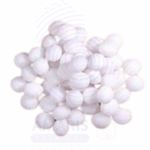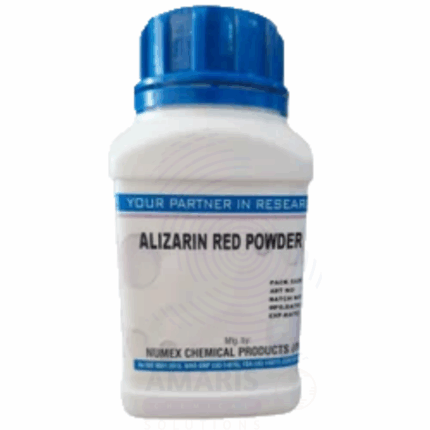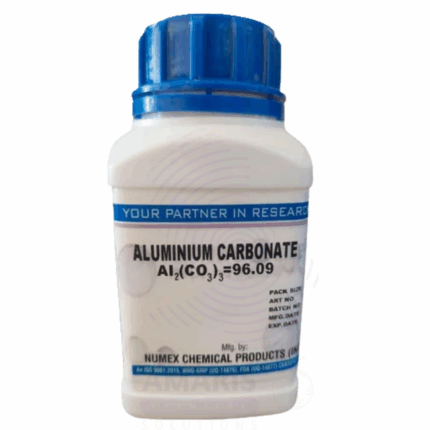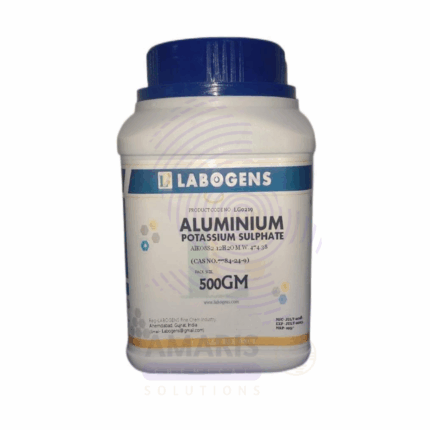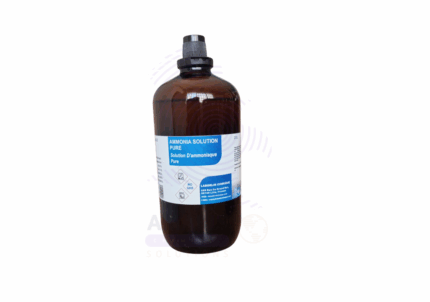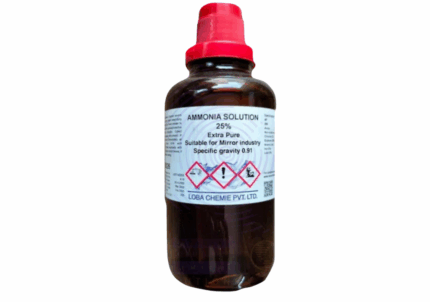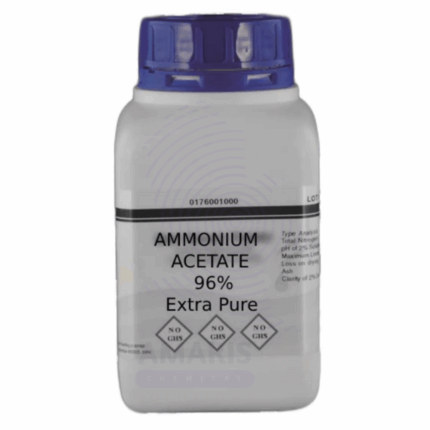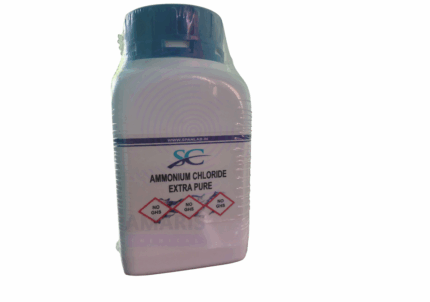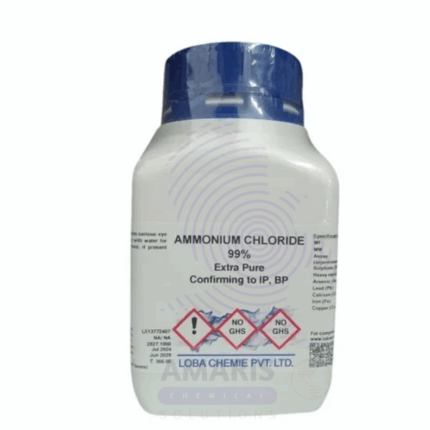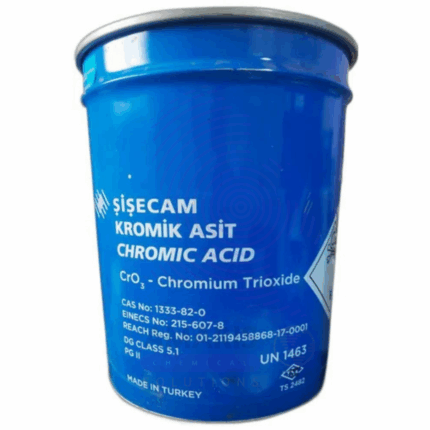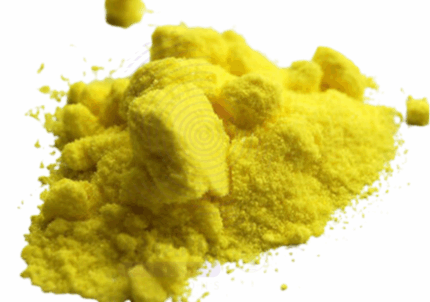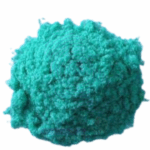
Ammonium Chromate Extra Pure
$ 18.00 Original price was: $ 18.00.$ 17.89Current price is: $ 17.89.
Ammonium Chromate Extra Pure is a high-purity, yellow crystalline compound primarily used in laboratory settings for analytical and inorganic chemistry applications. It serves as a strong oxidizing agent and is commonly utilized in qualitative analysis, particularly in the detection of cations, and in the preparation of chromate-based reagents. Its high solubility in water and ability to act as a corrosion inhibitor also make it useful in material science and electrochemical experiments. Due to the presence of hexavalent chromium, it is toxic and environmentally hazardous, requiring strict handling procedures and protective equipment. The extra pure grade ensures minimal impurities, making it suitable for high-precision research. It must be stored in tightly sealed containers, away from light, heat, and incompatible substances.
Ammonium Chromate Extra Pure
Primary Uses
- Reagent in Qualitative Inorganic Analysis
- Used to test for the presence of lead(II), silver, and barium ions by forming characteristic yellow chromate precipitates.
- Oxidizing Agent in Controlled Reactions
- Employed in redox chemistry to study oxidation reactions involving alcohols, aldehydes, or organics under lab supervision.
- Pigment and Color Chemistry Studies
- Used in educational labs to demonstrate the vivid color of chromates and their application in pigment chemistry.
- Precursor in Chromium Compound Synthesis
- Serves as a starting material for preparing chromium(III) salts or mixed oxidation-state compounds in research.
- Environmental Chemistry Testing
- Applied in modeling chromium(VI) contamination, adsorption, and remediation in soil and water systems.
Secondary Uses
- Photochemical Reaction Studies
- Investigated for its light sensitivity in historical and research experiments on photoreduction and photochromism.
- Corrosion Testing & Metal Surface Treatment Research
- Involved in experimental treatments of metal surfaces or as a model for corrosion inhibitors.
- Demonstrations of Toxic Heavy Metal Handling
- Used under strict supervision in teaching labs to illustrate proper procedures for handling carcinogenic and hazardous substances.
- Precipitation Equilibria and Solubility Product (Ksp) Calculations
- Helps illustrate sparingly soluble salts and equilibrium shifts in precipitation reactions.
- Electrochemical Studies
- Occasionally used in redox potential demonstrations and chromium(VI) electrochemical reduction studies.
| PACK SIZE |
250 grams Plastic Tin |
|---|
1. Basic Identification Attributes
- Chemical Name: Ammonium Chromate
- CAS Number: 7788-98-9
- HS Code: 28415000 (Chromates of other metals)
- Molecular Formula: (NH₄)₂CrO₄
- Synonyms:
- Diammonium chromate
- Ammonium chromate(VI)
- Chromic acid, diammonium salt
2. Physical & Chemical Properties
- Physical State: Solid (crystalline powder)
- Color & Odor: Yellow; odorless
- Boiling Point: Decomposes before boiling
- Melting Point: ~180°C (decomposes)
- Density/Specific Gravity: ~1.83 g/cm³
- Solubility:
- Water: Freely soluble (~116 g/L at 25°C)
- Alcohol: Slightly soluble
- pH Level: ~8.0–9.5 (in 5% aqueous solution)
- Vapor Pressure: Negligible
- Flash Point: Not flammable
- Autoignition Temperature: Not applicable
- Viscosity: Not applicable (solid)
3. Safety & Hazard Attributes
- Hazard Class (GHS):
- Carcinogenicity (Category 1B)
- Mutagenicity (Category 1B)
- Reproductive Toxicity (Category 1B)
- Acute Toxicity – Oral/Inhalation (Category 3)
- Skin Corrosion/Irritation (Category 1B)
- Aquatic Acute & Chronic Toxicity (Category 1)
- NFPA Ratings:
- Health: 4
- Flammability: 0
- Reactivity: 1
- Exposure Limits:
- OSHA PEL (as Cr(VI)): 5 µg/m³ (TWA)
- ACGIH TLV (as Cr(VI)): 0.05 mg/m³
- Reactivity:
- Strong oxidizer; may intensify fire
- Incompatible with organic materials, reducing agents, acids
4. Storage & Handling Attributes
- Storage Conditions:
- Store in cool, dry, well-ventilated area
- Keep away from combustible materials
- Incompatible Materials:
- Acids, reducing agents, organic substances, ethanol
- Container Type:
- Glass or compatible plastic with chemical-resistant seal
- Shelf Life & Expiration Date:
- 1–2 years in tightly sealed containers
- Special Handling Requirements:
- MUST be handled in a fume hood
- Wear full PPE: gloves, goggles, lab coat, and mask/respirator
- Avoid any skin contact or inhalation of dust
5. Regulatory & Compliance Attributes
- Regulatory Status:
- Strictly regulated under OSHA, REACH, EPA
- Listed as a known human carcinogen (IARC Group 1)
- Transportation Restrictions:
- UN Number: UN3085 (Oxidizing solid, toxic, n.o.s.)
- Hazard Class: 5.1 (Oxidizer), Subsidiary: 6.1 (Toxic)
- Waste Disposal Method:
- Treated as hazardous waste
- Collect in sealed, labeled hazardous waste containers
- Dispose through licensed chemical waste contractor
6. Environmental & Health Impact
- Ecotoxicity:
- Extremely toxic to aquatic life with long-lasting effects
- Persistence in Environment:
- Cr(VI) compounds are highly persistent and bioaccumulative
- Carcinogenicity/Mutagenicity:
- Known human carcinogen (IARC Group 1)
- Mutagenic and teratogenic risks confirmed in multiple studies
- Biodegradability:
- Not biodegradable; must be chemically reduced and treated for disposal
SAFETY PRECAUTIONS
- Personal Protective Equipment (PPE):
- Wear a lab coat, chemical-resistant gloves (preferably butyl rubber or nitrile), safety goggles, and face shield when risk of splashing exists.
- Use a certified fume hood—do not handle in open air.
- Use a disposable respirator or P3 filter if exposure to dust cannot be avoided.
- Handling:
- Handle only in a well-ventilated fume hood.
- Avoid all exposure: highly toxic by inhalation, ingestion, and skin contact.
- Do not mix with organic materials, reducing agents, acids, or combustible substances.
- Keep away from heat and friction—oxidizing properties can trigger reactions.
- Storage:
- Store in a tightly closed, labeled container in a cool, dry, secure cabinet (preferably corrosive/oxidizer-rated).
- Keep away from incompatible substances (e.g., acids, organic materials, flammables).
- Label clearly with toxic and oxidizer warnings.
- Hygiene Measures:
- Wash hands and arms thoroughly after use—even if gloves were worn.
- Decontaminate surfaces after handling.
- Never eat, drink, or smoke in areas where the chemical is used.
FIRST AID MEASURES
- Inhalation:
- Immediately move the person to fresh air.
- Administer oxygen or artificial respiration if breathing is difficult.
- Seek emergency medical attention—inhalation may damage lungs or kidneys.
- Skin Contact:
- Remove contaminated clothing.
- Immediately wash skin with large amounts of water and soap for at least 15 minutes.
- Seek medical attention—absorption through skin can be toxic.
- Eye Contact:
- Rinse eyes cautiously with water for at least 15–20 minutes.
- Lift eyelids to ensure thorough flushing.
- Seek immediate medical attention—may cause permanent damage.
- Ingestion:
- Do not induce vomiting.
- Rinse mouth with water if the person is conscious.
- Give water or milk only if advised by a medical professional.
- Seek emergency medical attention immediately—chromates are systemically toxic.
FIRE FIGHTING MEASURES
- Suitable Extinguishing Media:
- Use dry chemical powder, CO₂, or foam.
- Do not use water spray directly on spilled material due to potential reactivity.
- Specific Hazards:
- Not flammable, but acts as a strong oxidizer and can intensify fires.
- Thermal decomposition may release toxic chromium compounds, ammonia, and nitrogen oxides.
- Protective Equipment for Firefighters:
- Wear full protective gear and a self-contained breathing apparatus (SCBA).
- Avoid any contact with smoke, fumes, or run-off.
- Firefighting Instructions:
- Isolate area and evacuate personnel.
- Cool containers with water spray from a safe distance.
- Prevent run-off from entering water systems—it’s highly toxic to aquatic life.


 Preservatives(food)
Preservatives(food) Flavor Enhancers
Flavor Enhancers Acidulants
Acidulants Sweeteners
Sweeteners Antioxidants
Antioxidants Colorants(food)
Colorants(food) Nutraceutical Ingredients (food)
Nutraceutical Ingredients (food) Nutrient Supplements
Nutrient Supplements Emulsifiers
Emulsifiers
 Collectors
Collectors Dust Suppressants
Dust Suppressants Explosives and Blasting Agents
Explosives and Blasting Agents Flocculants and Coagulants
Flocculants and Coagulants Frothers
Frothers Leaching Agents
Leaching Agents pH Modifiers
pH Modifiers Precious Metal Extraction Agents
Precious Metal Extraction Agents
 Antioxidants(plastic)
Antioxidants(plastic) Colorants (Pigments, Dyes)
Colorants (Pigments, Dyes) Fillers and Reinforcements
Fillers and Reinforcements Flame Retardants
Flame Retardants Monomers
Monomers Plasticizers
Plasticizers Polymerization Initiators
Polymerization Initiators Stabilizers (UV, Heat)
Stabilizers (UV, Heat)
 Antifoaming Agents
Antifoaming Agents Chelating Agents
Chelating Agents Coagulants and Flocculants
Coagulants and Flocculants Corrosion Inhibitors
Corrosion Inhibitors Disinfectants and Biocides
Disinfectants and Biocides Oxidizing Agents
Oxidizing Agents pH Adjusters
pH Adjusters Scale Inhibitors( water)
Scale Inhibitors( water)
 Antioxidants(cosmetic)
Antioxidants(cosmetic) Emollients
Emollients Fragrances and Essential Oils
Fragrances and Essential Oils Humectants
Humectants Preservatives
Preservatives Surfactants(cosmetic)
Surfactants(cosmetic) Thickeners
Thickeners UV Filters
UV Filters
 Fertilizers
Fertilizers Soil Conditioners
Soil Conditioners Plant Growth Regulators
Plant Growth Regulators Animal Feed Additives
Animal Feed Additives Biostimulants
Biostimulants Pesticides (Herbicides, Insecticides, Fungicides)
Pesticides (Herbicides, Insecticides, Fungicides)
 Active Pharmaceutical Ingredients (APIs)
Active Pharmaceutical Ingredients (APIs) Excipients
Excipients Solvents(pharmaceutical)
Solvents(pharmaceutical) Antibiotics
Antibiotics Antiseptics and Disinfectants
Antiseptics and Disinfectants Vaccine Adjuvants
Vaccine Adjuvants Nutraceutical Ingredients (pharmaceutical)
Nutraceutical Ingredients (pharmaceutical) Analgesics & Antipyretics
Analgesics & Antipyretics
 Analytical Reagents
Analytical Reagents Solvents(lab)
Solvents(lab) Chromatography Chemicals
Chromatography Chemicals Spectroscopy Reagents
Spectroscopy Reagents microbiology-and-cell-culture-reagents
microbiology-and-cell-culture-reagents Molecular Biology Reagents
Molecular Biology Reagents Biochemical Reagents
Biochemical Reagents Inorganic and Organic Standards
Inorganic and Organic Standards Laboratory Safety Chemicals
Laboratory Safety Chemicals Specialty Laboratory Chemicals(Special Laboratory Equipment)
Specialty Laboratory Chemicals(Special Laboratory Equipment)
 Demulsifiers
Demulsifiers Hydraulic Fracturing Fluids
Hydraulic Fracturing Fluids Scale Inhibitors(oil)
Scale Inhibitors(oil) Surfactants(oil)
Surfactants(oil) Drilling Fluids
Drilling Fluids
 Dyes and Pigments
Dyes and Pigments Bleaching Agents
Bleaching Agents Softening Agents
Softening Agents Finishing Agents
Finishing Agents Antistatic Agents
Antistatic Agents
 Admixtures
Admixtures Waterproofing Agents
Waterproofing Agents Sealants and Adhesives
Sealants and Adhesives Curing Compounds
Curing Compounds Concrete Repair Chemicals
Concrete Repair Chemicals Anti-Corrosion Coatings
Anti-Corrosion Coatings
 Surfactants(cleaning)
Surfactants(cleaning) Builders
Builders Enzymes
Enzymes Solvents (Cleaning)
Solvents (Cleaning) Fragrances
Fragrances
 Electronic Chemicals
Electronic Chemicals Catalysts
Catalysts Lubricants
Lubricants Photographic Chemicals
Photographic Chemicals Refrigerants
Refrigerants Automotive chemicals
Automotive chemicals Pyrotechnic Chemicals
Pyrotechnic Chemicals
 Biodegradable Surfactants
Biodegradable Surfactants Bio-based Solvents
Bio-based Solvents Renewable Polymers
Renewable Polymers Carbon Capture Chemicals
Carbon Capture Chemicals Wastewater Treatment Chemicals
Wastewater Treatment Chemicals
 Pigments
Pigments Solvents(paint)
Solvents(paint) Specialty Coatings
Specialty Coatings Binders/Resins
Binders/Resins Additives
Additives Driers
Driers Anti-Corrosion Agents
Anti-Corrosion Agents Functional Coatings
Functional Coatings Application-Specific Coatings
Application-Specific Coatings
 Fresh Herbs
Fresh Herbs Ground Spices
Ground Spices Whole Spices
Whole Spices Spice Blends
Spice Blends Dried Herbs
Dried Herbs
 Leavening Agents
Leavening Agents Dough Conditioners
Dough Conditioners Flour Treatments
Flour Treatments Fat Replacers
Fat Replacers Decoratives
Decoratives Preservatives(baking)
Preservatives(baking)
 Plasticizers & Softeners
Plasticizers & Softeners Reinforcing Agents
Reinforcing Agents Adhesion Promoters
Adhesion Promoters Vulcanizing Agents
Vulcanizing Agents Antidegradants
Antidegradants Blowing Agents
Blowing Agents Fillers & Extenders
Fillers & Extenders Accelerators & Retarders
Accelerators & Retarders
